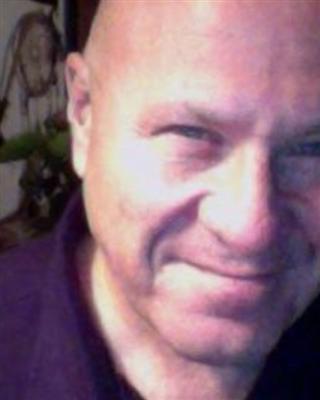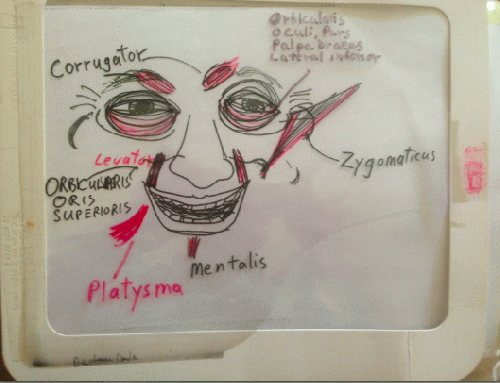You might say that my roots which led to my interest in positive psycholgy started in 1971 when I started exploring biofeedback and working with psychophysiology. I felt that biofeedback provided a non-drug, non-surgical way for people to raise their consciousness and take care of and optimize their health. In 1978 I set up a company, Futurehealth Inc, which really started operating as a business in late 1979, early 1980, when I started selling my invention, the Bio-Q thermal Biofeedback ring, which I have since sold, in different forms, over 250,000.
I started working with what is now called positive psychology around 1980-81.
I created a relaxation tape script with Keith Sedlacek, "Bio-Q relaxation-- Taking stress apart", as something to aid in the use of the Bio-Q ring, and it included instructions, inspired by the late Charles Stroebel, to smile inwardly. We added instructions to connect with a warm feeling in the heart and to think about a heartwarming past experience. I discovered that when people listened to that part of the tape, and succeeded and thinking about a heartwarming experience, their physiology, monitored on an early computerized biofeedback system, all went in the right direction. Heart rate, muscle tension, GSR (sweat gland activity) and respiration all relaxed.
That connection between heartwarming and positive physiological responses inspired me to dig for more information on Heartwarming, which took me to Index Medicus and Psych abstracts at Temple University's library (this was 16-20 years before the web became a resources to search.) Not surprisingly, heartwarming was not a useful keyword. Words like smile, smiling and orgasm were, so I conceived of heartwarming as little 'o's relative to the big 'O's of orgasm, and I started on a quest to get a better handle on heartwarming.
I started asking clients I was seeing (I worked as a biofeedback coach, with a physician and several counseling centers) to keep a diary of heartwarming experiences. But the diaries they kept included what I didn't think were heartwarming experiences. They were positive experiences, but not heartwarming. So, "Okay," I thought, I'd look at positive experiences. Back to the stacks at the university library. There was a dearth of research on happiness and positive experiences. Bu there was some work on smiling and surface EMG-- electromyograph-- readings. So I started hooking up surface EMG to clients putting the electrodes over their zygomaticus-- primary smile muscles. The results were pretty incredible. As researcher Paul Fair had found, I saw that depressed, pain, stress afflicted people had much lower smile muscle activity than people who weren't diagnosed with problems.
At the same time I started thinking about the potential and implications of working with positive stuff. I used the terms positivity training or positive emotional se;f regulation training. Positive psychology did not exist then and there was next to no research in that direction. Psychology was primarily focused on pathologization-- identifying and diagnosing pathology and symptoms and treating the pathology and getting rid of the symptoms.
I started wondering-- how far can you go with helping people by only having them build strengths and skills. I wasn't denying the value of the pathologization model of psychotherapy, but I wanted to know how possible it would be to lift a person, to move a person forward, out of pathology, to free them from symptoms by teaching them skills and helping them build habits that left the pathology and symptoms behind.
About the same time I was not finding research on heartwarming, I was looking to quotation books, where I DID find references-- quotes by Byron and Shakespeare. That set me off on a lifelong passion for quotations. I started a quotation website QuotationsCentral.com which has not been updated in ten or twelve years. I'll get to it eventually, since I've developed a content management software
quotation database that I use on my big website, to be discussed later.
I'm not a university researcher, so I didn't do double blind clinical studies. I asked questions, talked about it with my clinical supervisors and with my clients and tried things out. I thought that if people started keeping, first heartwarming, and then positive experience diaries, they'd start developing better habits for, first, noticing positive experiences, and then, opportunities for positive experiences, and that by keeping the diary, they'd lift themselves from negative attitudes that included cognitive distortions and gobalizations that they never ever felt good or had good experiences.
I asked them to practice smile strengthening exercises. My anecdotal studies had found something fascinating. But I'll write about that in another article. My biofeedback colleague and friend, John Perry, co-author of the book, The G-Spot, told me that some women were so averse and phobic to orgasm that they were uncomfortable simply spreading their legs in a coital position, that simply desensitizing them to that helped them. I saw the same kind of thing with smiling-- people were almost phobic to open, full expressive smiles. They had to learn to let go, to stop inhibiting themselves. I also encouraged them to start looking for other people smiling-- to smile back at them, and to start smiling at other people with the intention of bringing out smiles in the people they walked past. The reports back from clients were very positive.
Eventually, after collecting a few thousand reports of positive experience anecdotes I went through them and attempted to create a list of different categories of positive experience. I came up with the KPEI, the Kall, Positive Experience Inventory, which one enthusiastic user translated into Spanish.
In the late eighties I started working on a book that described my ideas. I'd had a bit of contact with Daniel Goleman, who, later became uber famous for his model-- Emotional Intelligence. Dan connected me with a literary agent, Mitchell Rose, who, in 1987, got me an incredible first author contract that include a $20,000 advance, a $15,000 talk show travel budget, and guaranteed first selection in a book club. The book was going great. I had a dream editor who sent me back chapters, as I submitted them, loaded with mark-ups-- suggested improvements. That kind of editor writer relationships become as rare as hens teeth anymore. But then, my editor was promoted and replaced with a terrible editor. My agent agreed that it was bad, and we sent back revisions of his revisions. Short story-- the book didn't get published. And my agent disappeared shortly after, not surprisingly. He'd signed Steven Covey. He probably retired on the royalties.
Fast track eight years ahead to 1996 I'd been running a conference on EEG Biofeedback, or Neurofeedback, started in 1993. The fourth year of my brain conference, which had developed the name, Winter Brain Meeting, I added a new meeting to the same venue-- The Optimal Functioning and Positive Psychology Forum. it covered positive psychology and Optimal or peak performance training. About the same time i formed the Optimal Functioning section of the Association for Applied Psychophysiology and Biofeedback. The University of Pennsylvania's Positive Psychology Center
history of PP lists the first Positive Psychology conference at Akumai, as occurring in 2009, and it WAS the first conference where academic researchers met together. But my conference explored APPLIED positive psychology and Optimal functioning. I see Optimal functioning and psychological approaches as totally compatible with Positive Psychology.
My conference ran until 2007. I'd also begun, five years later, a conference on story--
Storycon Summit Meeting on the Art Science and Application of Story, with the vision that story is way bigger than novels and movies, that it includes news, psychotherapy, religion, politics, marketing, knowledge management and more. All three conferences were ended when I retired from organizing conferences in 2007 and began working fulltime on my progressive website, Opednews.com, . I turned the storycon conference website into a website that published articles about story and writing--
Storycon.org.
My website, Opednews.com took me to another stage, but there was some consistency. I'd been in biofeedback since about 1971. To me, biofeedback was a way to help people raise their consciousness, to empower them-- to awaken them to the veins of gold that they possessed but didn't know how to tap. Positivity training was also an approach to awakening-- awakening smiling, joy, goodness, the capacity to see opportunities for positive experiences and make the most of them. And my work with Opednews, as a progressive publisher, writer and activist has also been very much about awakening people, casting light where the mainstream media does not, getting people to see with a different perspective. I wrote an article about in 2008,
Awakener; My Occupation. And yours?In 2002 I presented the model of positive psychology I've developed, "The Anatomy of Positive Experience" at the Positive Psychology Summit Meeting and in 2013 I presented the model at the first Canadian Positive Psychology meeting.
Around 2008 Joe Trippi, Howard Dean's campaign manager, and the first campaign manager to really use the internet (in 2003-4) commented at a conference I was attending that Barak Obama was winning the primary against the most powerful campaign in history-- Hillary Clinton's, using a bottom up approach. I'd been discovering and concluding, around the same time, that taking a bottom-up approach to my website-- bringing in users to participate in decision-making-- was making it more successful.
That got me fascinated with the idea of bottom-up. I started a radio show called
Rob Kall Bottom-up Radio, with the basic premise that we're transitioning from a primarily top-down culture to one that's more bottom-up, even our brains, and for about six or seven years have been interviewing people who have a take on top down and bottom-up. That's led me to the realization that connection consciousness- awareness and consciousness of how we are connected to other people, communities, cultures, eco-systems, all forms of life and the planet is essential to functioning as a whole human. I've written a lot about this, with many of the articles collected
here, and I am working on a book, the Bottom-up Connection Revolution. I also have a website,
BottomUpMind.com and another website,
SmallActs.org , which I created because I believe, as Woody Guthrie and Howard Zinn have both said, that small things, small acts, are what change the world. For a few years I also did a radio show that focused more on mind, body, spirit and Positive Psychology. You can check it out
here.
I'm also working on a few other website projects related to Positive Psychology-- kindnesses.org warmheartedness.org, and writesmarter.com-- none active yet. Write smarter is aimed at helping people to write more kindly, wisely , and persuasively, something I've learned a lot about, particularly from Margo Rush and Meryl Ann Butler.
In the past few years, inspired by particularly venomous trolls I've had to deal with over the last eight or nine years (it comes with the territory when you run a website reaching hundreds of thousands of people monthly) I have developed a strong interest in psychopaths, sociopaths and narcissists, having done over
65 articles, interviews and transcripts on the topic. It's led me to conclude, having interviewed so many experts, a few psychopaths and having known a few, that one key element for psychopaths, sociopaths and narcissists is absence of caring and empathy. That's put me on a new path to learn more about caring and empathy, but also on a mission to develop what I call
The Psychopathy Defense and Optimization Research ProjectIt's been an interesting ride, first discovering heartwarming as a scientific blind spot, then being a very early explorer in the field, then watching as the field has emerged and grown.
if you're interested in more about my earlier work, here's a
CV that I stopped updating in 2005. And here's the
wikipedia page on me.
I'll be fine-tuning and updating this as new links and developments happen.






